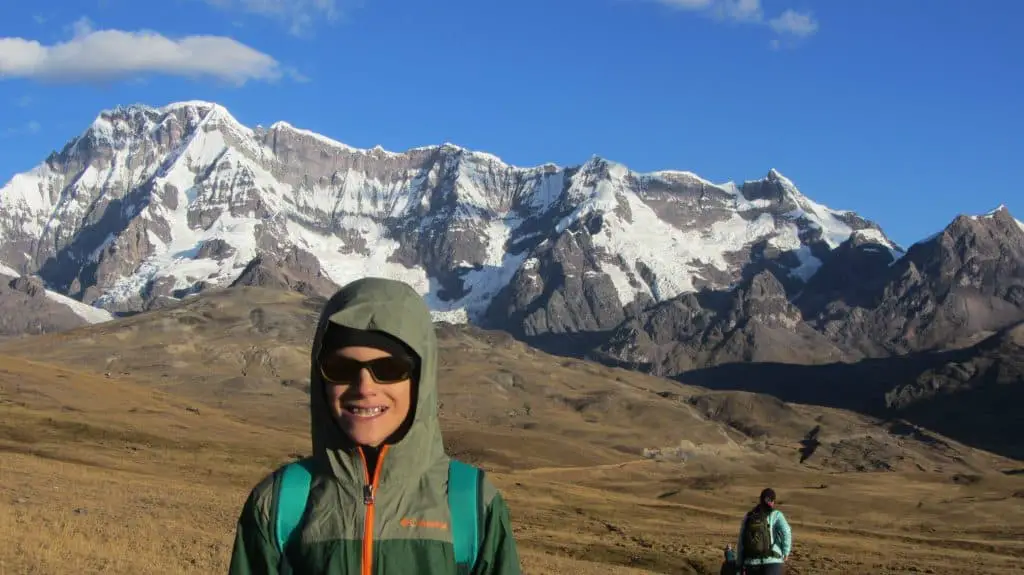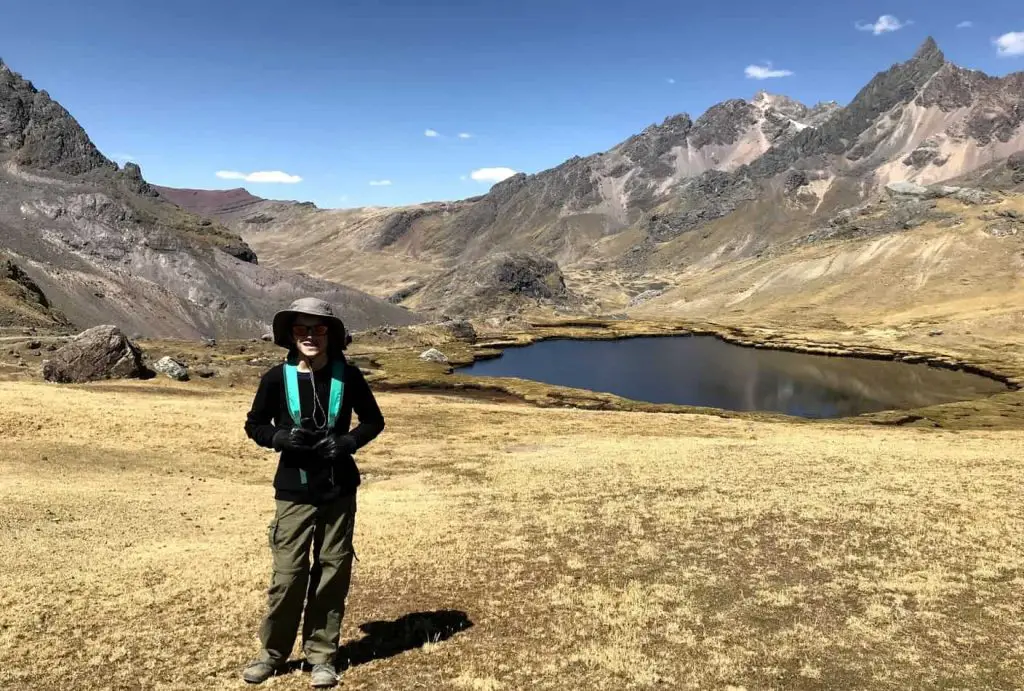Before I brought my ten-year-old on a high elevation hike for five days in Peru, I was not sure if he’d make it. Like most people, we are flatlanders and the thought of hiking over mountain passes at 17,000 feet was a little intimidating even for me. If you are considering bringing children on a high elevation hike here are some essential tips.
A ten-year-old child can hike at elevation. Hiking at elevation for children or adults requires preparation. It is crucial to acclimatize to higher altitudes before starting the hike. Arrive at the hike location a few days early and do some shorter acclimatization hikes.

Physical Fitness
Functional physical fitness will make it more comfortable for a child to hike at elevation. Establish a walking routine at home in the months or weeks before the hike. Gradually build up the number of hours and miles that you walk with your child.
My son and I started going on long walks on Saturdays at noon in South Texas. We also did shorter walks during the week in the evenings. We had approximately three months before our epic journey on the Ausangate trek in Peru. We started with a one-hour walk on a city path and then added 15 minutes each week to these walks. We maintained the weekday walks at the same length of time. Once we had built up to a three-hour walk on Saturday we did not add any more time. About two weeks before our trip to Peru we tapered off to allow our bodies to rest.
The training walks are essential if you live in lower altitudes and if you plan to hike at elevation for more than a few hours. Hiking at elevation is hard enough, but if you do it for six to eight hours per day as we did, your feet and lower legs will suffer if you have not followed a training schedule. Here is a breakdown of what we did. You can adjust your training to the amount of time you have before your hike and your current level of fitness.
| Week | Weekdays | Weekends |
| 1 | 2 X 20-minute walks | 1 x 60 minutes |
| 2 | 2 x 30-minute walks | 1 x 75 minutes |
| 3 | 2 x 30-minute walks | 1 x 90 minutes |
| 4 | 2 x 30-minute walks | 1 x 105 minutes |
| 5 | 2 x 30-minute walks | 1 x 2 hours |
| 6 | 2 x 30-minute walks | 1 x 135 minutes |
| … | … | … |
Continue the progression until you reach three hours for the long walks.
The weekday walks can be optional but you should not skip the long walks on the weekend. Do not worry about how far you are walking, just keep increasing the time. My son and I were doing these walks in South Texas in late Spring where the noonday temperatures were usually close to 100° F or about 38° C. We suffered but we knew that it would pay off when we were climbing up Palomani Pass at 17,000 feet, and it sure did. On the mountain in Peru we did suffer, but not because our feet or legs could not carry us any further. This preparation allowed us to keep going in the thin air.

Proper Footwear
Invest in quality walking or hiking shoes for your child and use them on the training hikes before the trip. My son wore a pair of BIG KIDS’ HIKEPORT WATERPROOF MID from Keen Footwear. They were a little hot on the training hikes, but they were a gamechanger on the sunny slopes of Ausangate where day time temperatures were pleasant, and at night the glacial runoff was nearly frozen solid. They provided great support over the dusty, rocky mountain paths. We had a few shallow water crossings and they kept his feet dry and warm.
Good socks are also important. Your child’s feet should be dry to avoid blisters. My son wore some hiking socks during the day, and he wore my thick wool socks at night in his sleeping bag. The Columbia hiking socks performed wonderfully. We never had issues with blisters or moisture from sweat. Avoiding blisters is essential. During our long training walks on the weekends, he did develop a small blister on this heel, but this preparation meant he was less likely to have foot problems on the hike.

Acclimatization
We arrived in Peru seven days before our main hike began. We stayed in Ollantaytambo in the sacred valley at over 9,000 feet above sea level. Here we enjoyed being tourists with my wife. We went on some easy walks visiting local sites in the area. Just being at this elevation was preparing our bodies for the more arduous hiking we would do at 13,000 – 17,000 feet above sea level.
Our acclimatization phase was also a great time to visit the most famous site in the sacred valley, Machu Pichu. Machu Pichu is an international tourist destination, so be prepared for massive crowds and a quasi theme park experience. These hordes of people is another reason why the Ausangate trek is so unique – you will often be completely alone with your group on the majestic passes or at the base of incredible glaciers.
A few days before our main trek around Ausangate began, we stayed in Cusco at over 11,000 feet above sea level. Our guides for the main trek offered to take us on some training hikes in the area. We visited the Balcon del Diablo, which was a three hour round trip hike from Cusco’s historic center. It features a stream, and some small waterfalls.
If you are planning to bring your child on a high altitude hike, be sure to follow these simple tips: physically prepare, invest in quality hiking shoes, and acclimatize by arriving a few days early. Going on a guided trip is always a good idea unless you are a very skilled hiker with specialized training. Altitude sickness can come on at any time to anyone, and having experts on hand will help mitigate the risks involved in high altitude hiking. We hiked with another family who had a nine-year-old daughter and an eleven-year-old son. All three of the kids were able to make it over all of the high-altitude passes each day. Some tears were shed, and bodies were certainly tested, but no one gave up.

